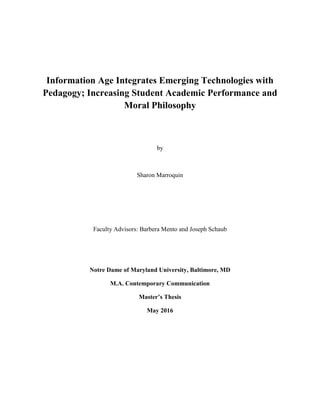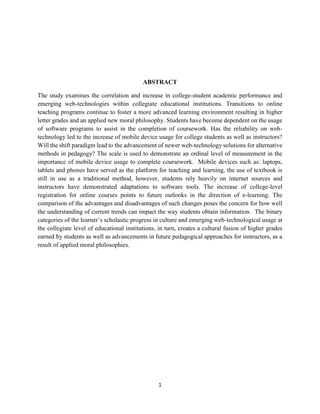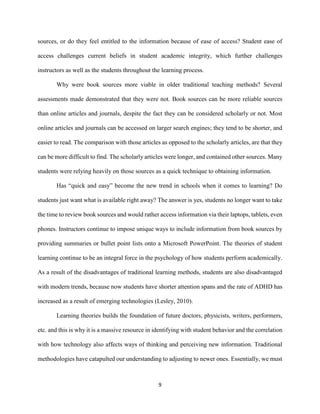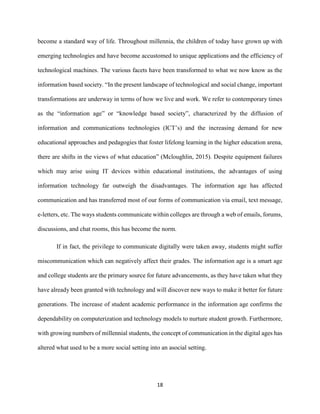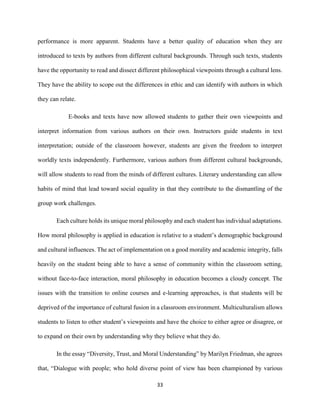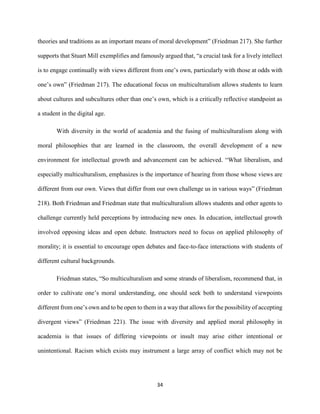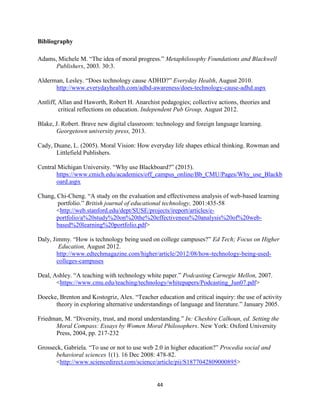This document discusses how emerging web technologies have integrated with pedagogy and increased student academic performance and moral philosophy. It examines how the transition to online teaching programs has fostered a more advanced learning environment, resulting in higher grades. Students have become dependent on software programs and mobile devices to complete coursework. While traditional teaching methods relied on textbooks, students now rely heavily on internet sources. The integration of technology has allowed for more accessible and efficient learning. However, some traditional instructors were reluctant to adopt new technologies. Overall, the increased use of web-based tools appears to have positively impacted student learning and grades.
